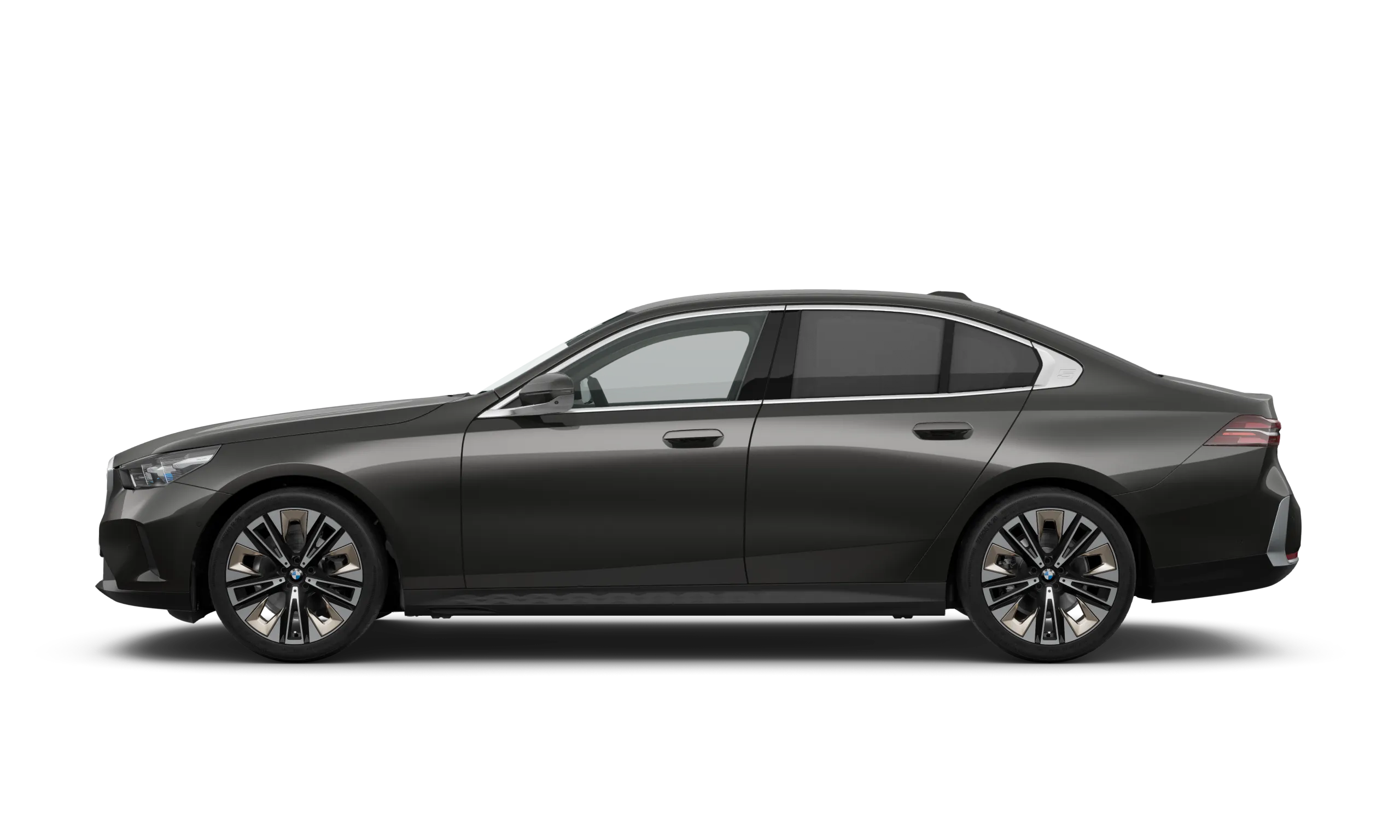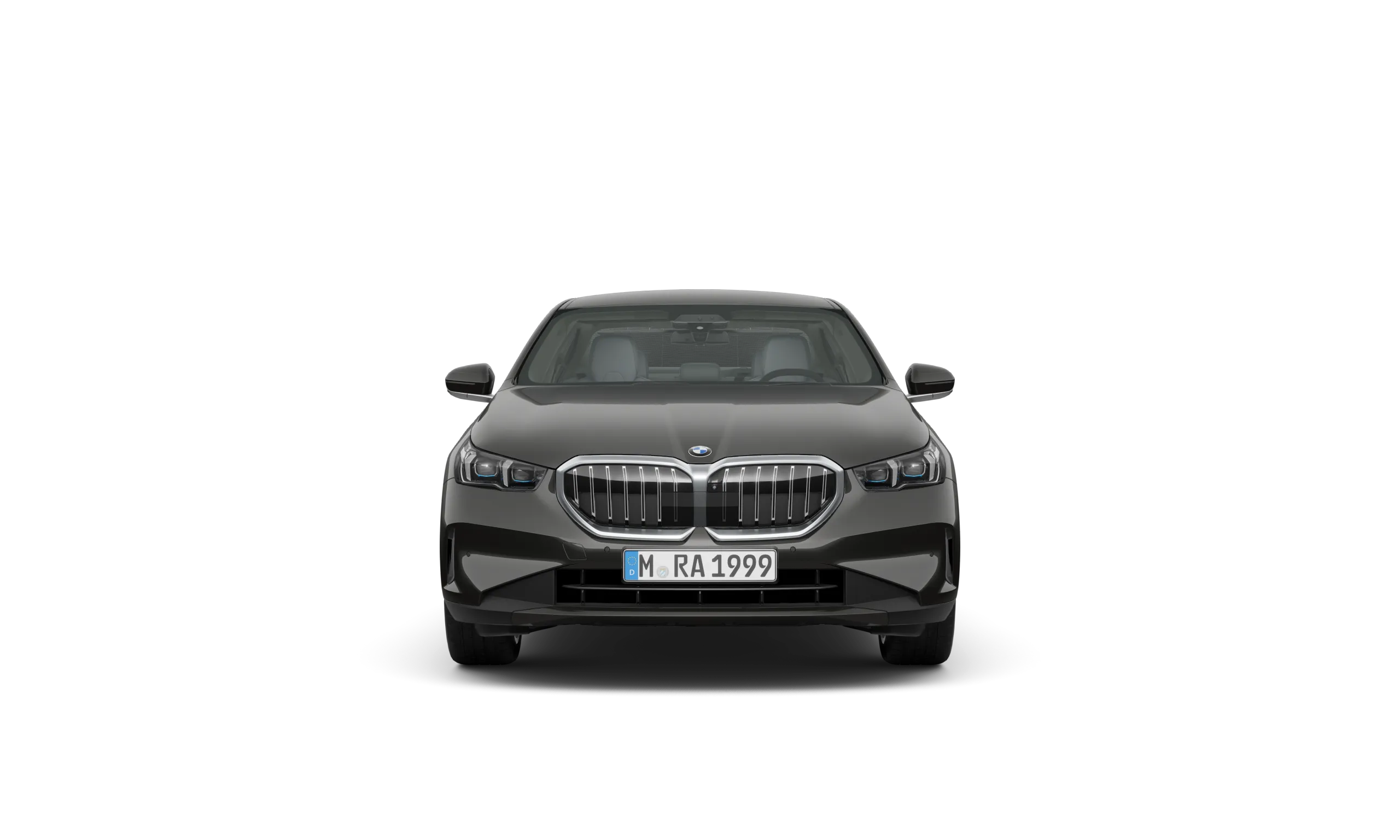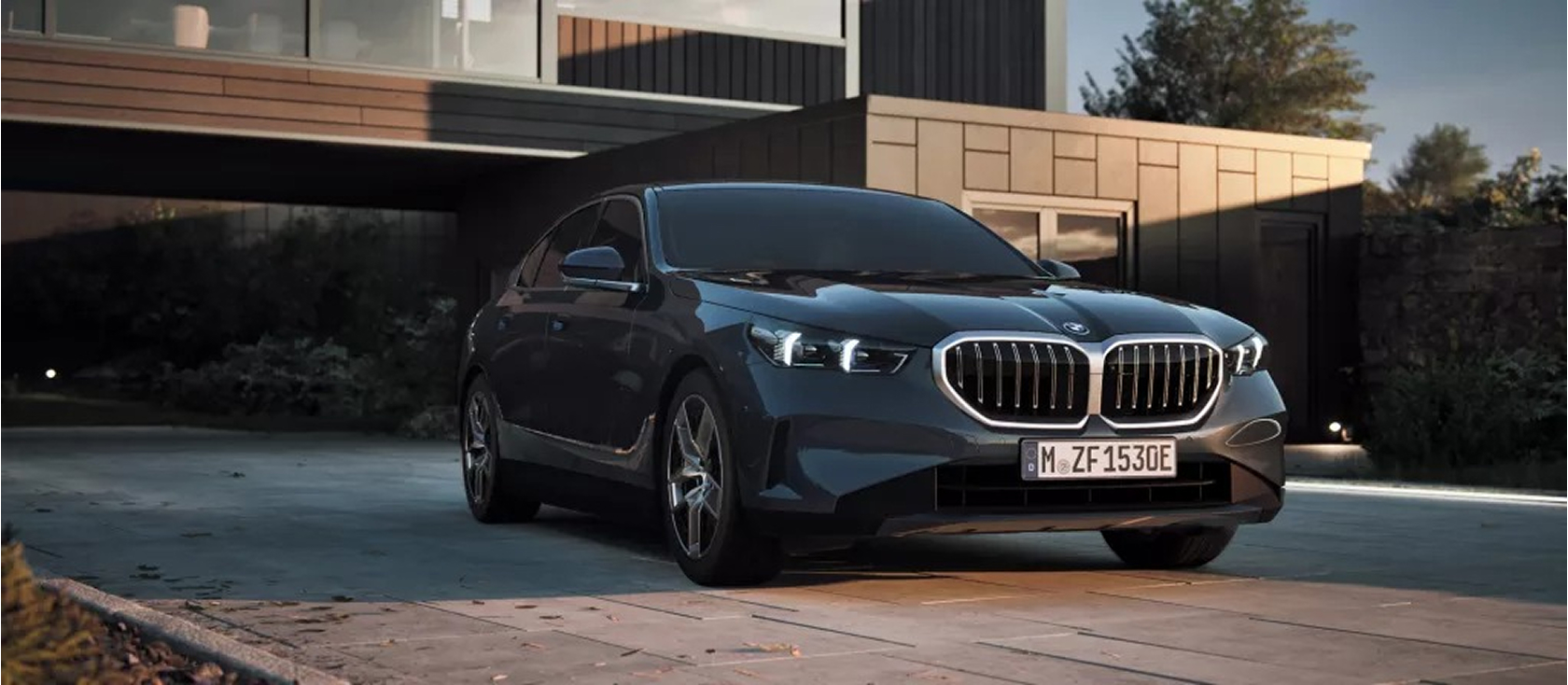TECHNICAL DATA FOR THE BMW 5 SERIES PLUG-IN HYBRID.
Cylinders
4
Displacement in cm³
1.998
Nominal power in kW (hp)/1/min
140 (190) / 4,400 - 6,500
Nominal torque in Nm/1/min
310 / 1,500 - 4,000
(Nominal) power/30-minutes-power in kW (hp)
135 (184)
(Nominal) torque in Nm
250
Fuel consumption, combined WLTP in mpg13
353.1–470.8
Fuel consumption with a discharged battery, combined WLTP in l/100 mpg
39.8–43.5
CO2 emissions, combined WLTP in mpg 13
17–14
Energy consumption, combined WLTP in miles/ kWh 13
2.9–3.2
Electric range, WLTP in miles 3
59–64
Pass-by noise in dB(A)
2.9–3.2
Battery capacity in kWh
19.4
Maximum charging power AC/DC in kW
11 (-) / -
Maximum charging power AC in kW
11
Charging time AC 0–100% in h
2:15



Length in mm
5,060
Width in mm
1,900
Height in mm
1,515
Width incl. mirrors (driver / passenger side) in mm
2,156
Wheelbase in mm
2,995
Vehicle curb weight in kg 5 5
2,080
Permissible gross weight in kg
2,655
Payload in kg
650
Optionally delivered with support for trailer load, braked, up to 12% / towbar download in kg 6
1,800 / 100
Luggage capacity in l
520
Tank capacity in l
60
BMW WHEELS & TYRES.
We subject the tyres for our vehicles to stringent tests with up to 50 different quality criteria – significantly more than prescribed by the uniform tyre labelling regulation that applies throughout Europe. This is where you will find all the information on the properties of the tyres used at BMW.
Fuel consumption and CO2 emissions.
For Plug-in Hybrid vehicles these figures were obtained using a combination of battery power and fuel, for battery electric vehicles after the battery had been fully charged. Plug-in Hybrid and battery electric vehicles require mains electricity for charging. Figures shown are for comparability purposes. Only compare fuel consumption, CO2 and electric range figures with other cars tested to the same technical procedures. These figures may not reflect real life driving results, which will depend upon a number of factors including the starting charge of the battery, accessories fitted (post-registration), variations in weather, driving styles and vehicle load.
1Provisional figures; any missing figures were unavailable at the time of publication.
2For Plug-in Hybrid vehicles these figures were obtained using a combination of battery power and fuel, for battery electric vehicles these figures were obtained after the battery had been fully charged to 100%. Plug-in Hybrid and battery electric vehicles require mains electricity for charging. WLTP figures shown are for comparability purposes. Only compare fuel consumption, CO2 and electric range figures with other cars tested to the same technical procedures. These figures may not reflect real life driving results, which will depend upon a number of factors including the starting charge of the battery, accessories fitted (post-registration), variations in weather, driving styles, fuel type and vehicle load.
3Range depends on various factors, in particular: individual driving style, route characteristics, outside temperature, heating/air conditioning, pre-conditioning.
4The charging performance depends on the state of charge, ambient temperature, individual driving profile and use of auxiliary consumers. The ranges shown are based on the WLTP best case. The charging times apply to ambient temperatures of 23 degrees Celsius after a preceding drive and may differ depending on the usage behaviour.
5The EC unladen weight refers to a vehicle with standard equipment and does not include any optional extras. The unladen weight includes a 90% full tank and a driver weight of 75 kg. Optional equipment may affect the weight of the vehicle, the payload and the top speed if the selected equipment has an impact on the vehicle's aerodynamics.
6Trailer load depends on the vehicle options
7The values measured in accordance with UN/ECE Regulation No. 51/EU Regulation 540/2014 are rounded.
9WLTP Figures shown are for comparability purposes. Only compare fuel consumption and CO2 figures with other cars tested to the same technical procedures. These figures may not reflect real life driving results, which will depend upon a number of factors including the accessories fitted (post-registration), variations in weather, driving styles, fuel type and vehicle load.
10For Plug-in Hybrid: Electric drive depending on battery charging level.
11Composed of combustion engine drive (specified nominal value) and electric drive (up to specified nominal value). Electric drive depending on battery charging level.
12For Plug-in Hybrid: At temperatures below freezing, the fully electric drive system is only available after a few kilometres of driving, once the battery has heated to operational temperature.
13For Plug-in Hybrid: Weighted, combined (EC AC Charge Weighted)
